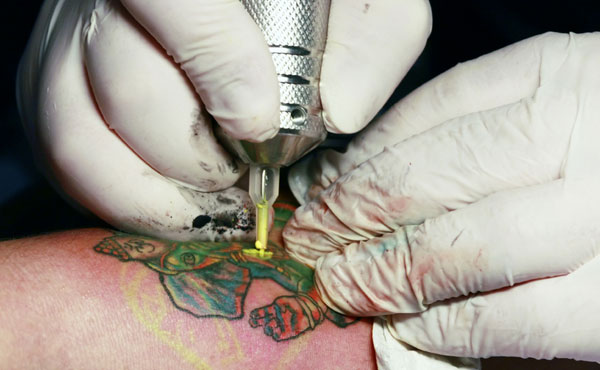Math Formula Predicts Tattoo Sag

For anyone who's ever wanted to know if that tattoo at age 22 will hold up 20 years later, British researchers have devised a mathematical model to determine how much the drawn lines are expected to sag.
The new study shows that small details in a tattoo are the first to go with age, with thicker lines being less affected, said study researcher Ian Eames, who works in fluid mechanics at University College London. Tattoos are extremely popular in the United States, with more than one-third of people ages 18 to 25 sporting at least one design, he said.
"Skin type, age, size, exposure to the sunlight and the type of ink which is used all influence how a tattoo disperses with time," Eames said in a statement.
Even though finely detailed tattoos look good when they're first done, they can lose their definition over 15 years, depending on how fine the lines are, Eames said.
That's because tattoo ink is made of a suspension of particles that are insoluble in water. Metals like mercury, lead, cadmium, zinc, nickel and iron are used to make the colors. Tattoos are created by puncturing the dermis level of the skin while simultaneously applying ink.
This damage to the skin leads to a response from the immune system, where the body sends white blood cells to clear the debris from the skin damage . During this process, some of the ink particles are removed from the body, while other ink particles are engulfed in cells and sealed below the surface of the skin, researchers said.
When tattoos lose their shape and start to sag, that's because the cells that contain the ink particles divide, die or exit the body, according to the study.
Get the world’s most fascinating discoveries delivered straight to your inbox.
The study was published this month in the journal Mathematics Today.
Pass it on: Fine details in tattoos are the first to go with age, followed by sagging.
- 4 Common Skin Woes, and How to Fix Them
- Chinese Plant Extract Could Improve Skin-Whitening Cream
- 10 Medical Myths That Just Wonâ??t Go Away
Follow MyHealthNewsDaily on Twitter @MyHealth_MHND.



